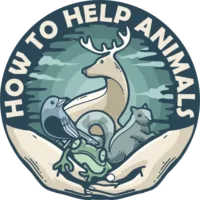Some love them, and others hate them. Deers in your backyard can be both a peaceful sight and terrifying for those who are afraid they will eat their crop. I include myself in the first group who love when the deer return to my backyard.
To make the deer return to your backyard, you will need to offer them a safe space from predators and good food. In the wild, deer live on herbs, buds, and berries. You can feed the deer fruits, vegetables, and pellets to increase the chances of them returning to your backyard.
In the wild, deers eat herbs, buds, and berries. They also thrive on grasses, shoots from trees, and when food supply is scarce, they also eat bark.
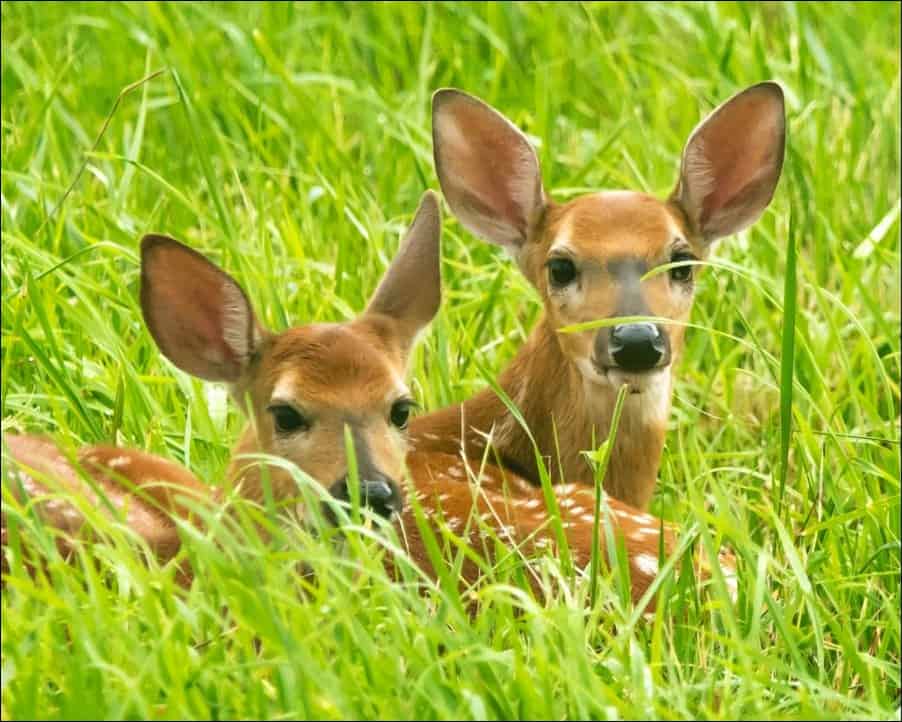
What can I feed backyard deer?
If you have access to ensilage that would be the best thing to provide for the deers. I’m aware not everyone is able to get their hands on ensilage and putting it in their backyard.
While ensilage both provide food and liquid for the deer you can give them other things to eat.
Things you can feed deers that don’t cost anything:
- Dried stinging nettles
- Fallen fruits you have found in the wild
- Wild blueberries
- Acorns (without caps)
- Clovers
- Red maple leaves
- A water supply
Things you can feed deers that you might find at home:
- Fruits like bananas, apples, and pears.
- Vegetables like potatoes, broccoli, Brussels sprouts, and cauliflower.
- Berries like strawberries, raspberries, and blackberries.
- Crushed grains like wheat, barley, oats, and rice.
Things you might want to consider buying to attract deer to your backyard:
- A salt lick offers deers nutrients and a way to put on some weight.
- Deer pellets are made for deers and provide beneficial nutrients and vitamins.
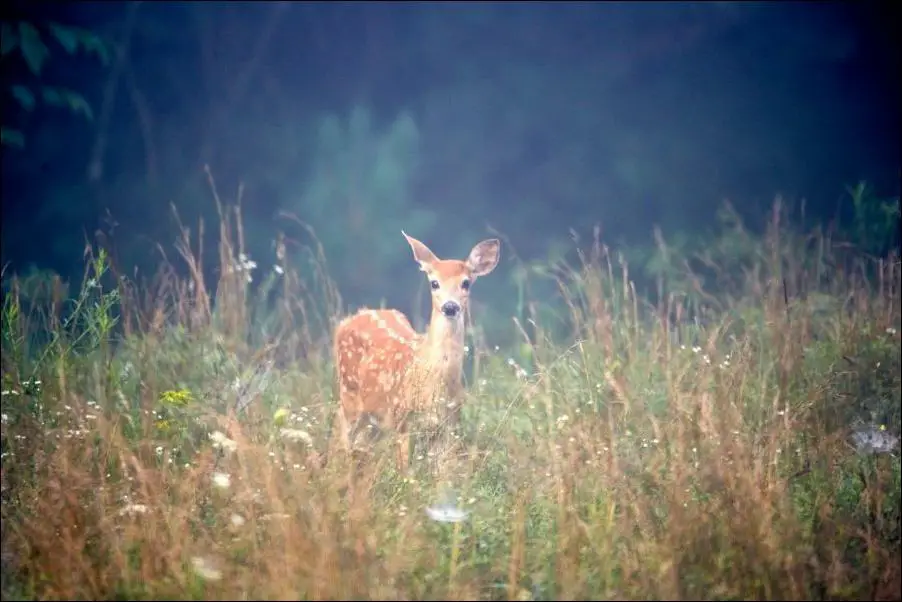
Is it ok to feed deer in my backyard?
Some some say it would cause starvation, aggression in the herd, and waste valuable energy for them to travel to your. Others say feeding deer in your backyard might instead offer them some peace of mind and an advantage.
My take on it: It is OK to feed deer as long as you provide them with separate feeding stations in your backyard, a safe space from coyotes and other predators, and you live close to their natural environment. The most important is that the backyard is an alternative, providing them with a food source in their habitat.
- Provide the deer with separate feeding stations
Older and bigger bucks assert dominance in the herd by kicking and forcing weaker individuals out from the group. That’s why you will need multiple feeding stations. If you have a larger backyard, you may want to keep one in every corner, as far from the other as possible so that the buck won’t get fractious.
- Provide the deer with a safe space from coyotes and other predators
In the deer’s natural habitat, they are always looking for predators and are ready to run. If you can provide them with a haven for them, where they are free from harm, you give them so much more than food.
- You will need to live close-by to them
This is very important. If you live on Manhattan, New York, reconsider. Trying to get deer to Fifth Avenue is a bad idea. The deer shouldn’t waste energy to get to your backyard, and shouldn’t expose themselves to danger by having to cross the roads or going through multiple backyard to get to yours. Your home need to be next to theirs.

What should you not feed deer?
There are some plants, herbs, trees, bushes, the deer really doesn’t like to eat. I will divide them into three piles depending on which type of plant it is.
Bulbous plants:
- Allium
- Hyacinth
- Snowdrop
- Pentecost
- Daffodil
- Pearl hyacinth
- Garden iris
- King bed lily
Trees and bushes:
- Hornbeam
- Boxwood
- Elder
- Taxus baccata
- Magnolia
- Rhododendron
- Snowberry
- Spiraea
- Siren
- Arborvitae
Garden plants:
- Akleja
- Anisisop
- Blue ball thistle
- Bridal veil
- Dew cover
- Thimble flower
- Hydrangea
- Hyssop
- Japanese grass
- Kantnepeta
- Lieutenant heart
- Peony
- Delphinium
- Steppe sage
- Poppy
Should you put out a salt lick for deer?
Salt licks, or mineral licks, provide deer with minerals and the salt they need. The deer know themselves if they are in need of salt. Salt binds to liquids and when deer consumes the salt it binds water which will help them not to dehydrate.
The easiest way to provide salt to the deers is by providing them with a salt lick. Since bucks can be aggressive towards smaller group members, there would be best to have at least two salt licks. The best way to offer the salt lick would be to offer it approximately 3 feet (1 meter) from the ground. I would suggest hanging it from a tree. Here are the salt licks I’m using. They come in pairs and are easily hangable from a tree.
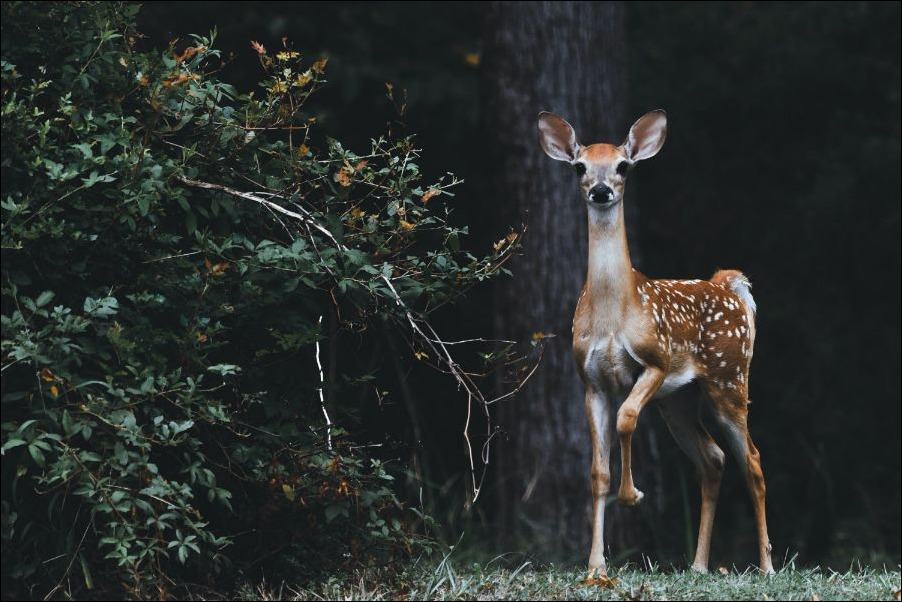
How do I attract deer to my yard?
The hardest thing to do is to attract the first deer to your backyard. But as soon you get the first one, they will spread the rumor about you in the herd.
By providing the deer with a safe space with large bushes, shrubs, tall grass, and plenty of food to eat, you will attract deer. Deer seems to be most fond of narrow-leaved evergreens. Daylilies, English ivy, and hostas seem to be their favorites. An important thing to always have on hand is a water supply. Make sure you have a large tub of water waiting for them. When more than one deer is coming, make sure to have more than one water supply.
Place feed in thought-out places
Place out some corn feeders for them as well. Make sure the feeders are as far away from your house as possible. This increases the chance of the deer eating some. There are some excellent deer feeders out there, and I have three of these in my backyard—each filled with different types of feed. I feed the deers some corn, pellets, and acorns during summer and crushed grains during winter. I do not feed them corn during winter and here is the reason why.
If you plan to attract deer to your feeders during winter, it’s key to make it easy for them to enter and walk around in your garden. If there are 3 feet of snow, they will have some trouble getting to salt licks and feeders.
My best advice would be to get a liquid attractor. I usually go with Black-Magic Liquid if I haven’t seen my dear friends in a while. Make sure there is food nearby where you use the liquid, though.
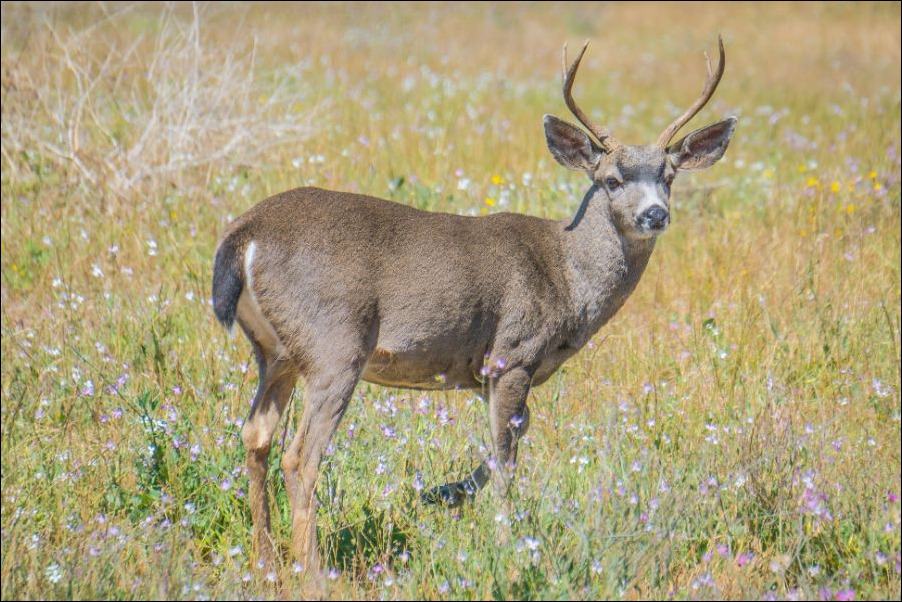
Deer will eat on the plants you wish to keep for yourself
The biggest reson people don’t wish to have deer visitors in their gardens is because they will eat almost anything. Deers love to eat almost all vegetables, flowers and shrubs. They will also ruin the bark on the trees. The risk is laos they will eat the bird’s food.
If you wish to keep deers coming to your garden but still wish to have some plants for yourself, you will need to take some precautions.
Some precautions to take:
If you wish to visited by deer, but still wish to keep some areas private you can do the following:
- Add a physical barrier like a chicken wire through the area.
- If you have the opportunity to seclude some areas with chicken wire it would stop some. Another piece of advice using chicken wire is to use it as flooring. Deers hate to walk on chicken wire.
- Deer repellent
- Although I’m not a fan of pesticides since it harms biodiversity you can use a kinder version of pesticides that don’t cause harm. There are tablets you dig down next to the roots of your plants.
- Old CDs will scare the deers off.
- You can use old music CDs to repel deers from areas you do not wish them to walk into. You can hang them up in strings. The reflection when the sun hits the discs scares them off.
- Yellow flowers might scare them off.
- An old myth is that deer don’t like the color yellow. I don’t know if there is any science backing it up. But why not just in case enclose the areas off with some beautiful yellow plants? A beautiful yellow wall of flowers. I don’t think you can make the deers pay for it, but it still will be worth it.
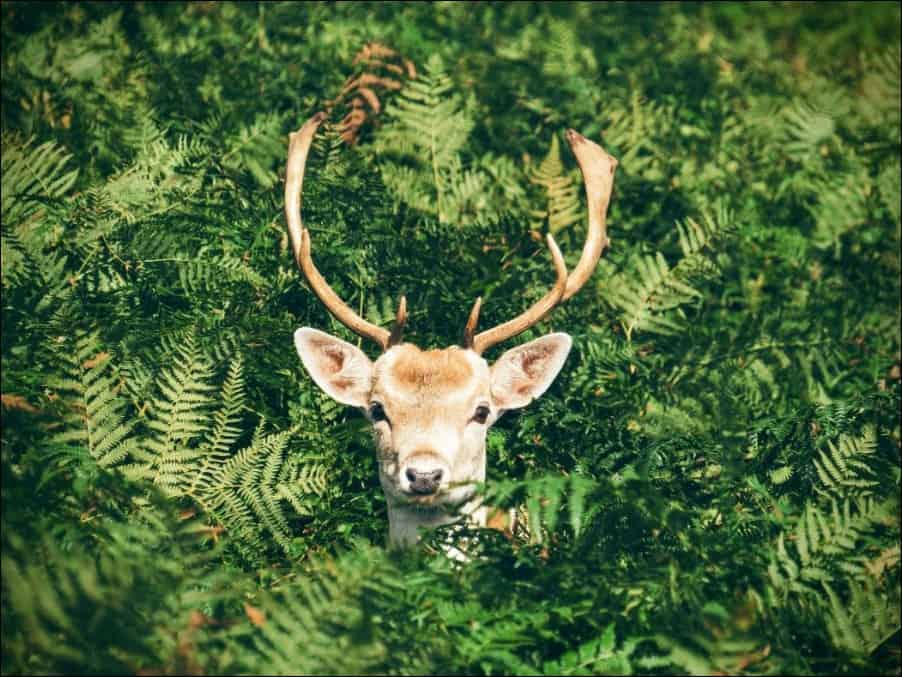
Can deers eat birdseed?
Deers can eat birdseed, and they will do it every chance they get. However, there are some seeds they don’t like that much. For example, safflower and Nyjer seeds taste bitter to them, and they usually avoid it. If you have bird feeders in your garden, make sure to place them at a height the deers won’t reach them. The deers might otherwise see the birdfeeders as a deer feeder and wouldn’t hesitate to empty it in no time.
So yes, deers can eat birdseed and will empty the feeders. Place the feeder as high as you can. The deers will still be able to eat the waste from the ground and still be happy about it. Make sure their own deer feeders have food as well.
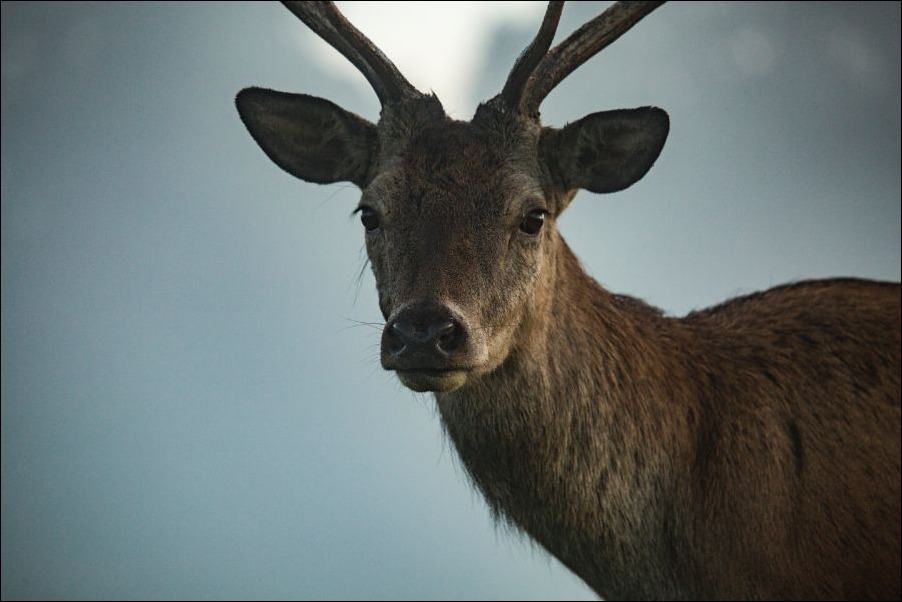
What vegetables will deer eat?
Deer are herbivores and only eat plants and nothing from the animal kingdom. When their natural feed is scarce and they have a problem to found anything else to eat, they might look in your garden for edible stuff. There are some vegetables they like to eat.
Vegetables deer like to eat:
- Beans
- Broccoli
- Brussels sprouts
- Cabbage
- Cauliflower
- Cole
- Lettuce
How do you know if you have deer in your garden?
If you haven’t seen any deer in your garden, but you believe they are there when you are not looking, you might want to check this.
1. Deer tracks
This might be an easy guess. But you can see if you have deer in the garden by watching the ground for tracks. Deer tracks look almost like two rabbit ears and the dewclaws as eyes.
2. Deer spillings
Deer poop can be quite easy to identify. Deer poop looks a little bit like rabbit poop but is much greater in quantity and more shaped like an egg.
3. Nibbles
You can see on your flowers if there has been someone nibbling on them. Both shots and flower tops can disappear during the night.
4. Rubbings on trees
You might see some weird markings on your trees. Places where the tree has lost its bark. There’s usually bucks who are marking their territory with their antlers.
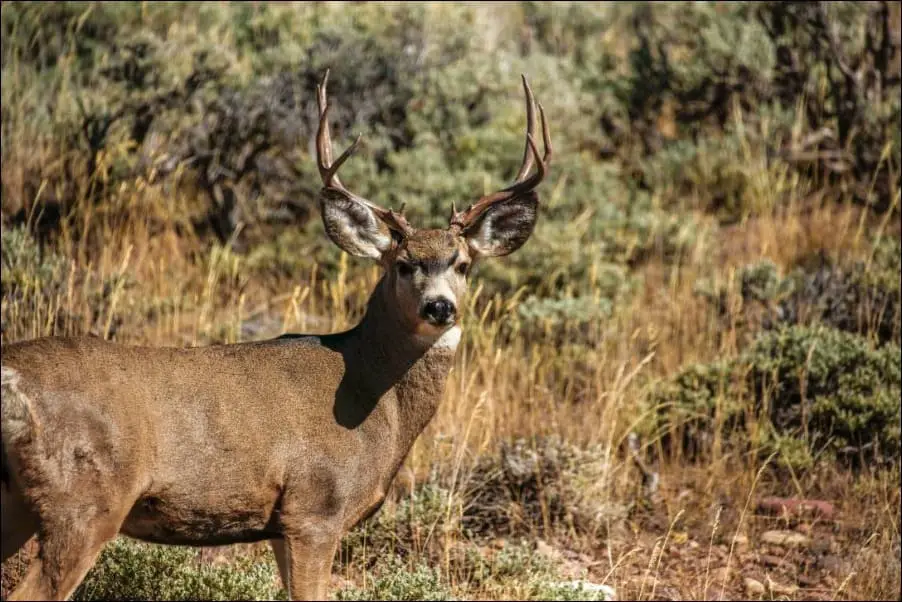
Conclusion
You can attract deers to your garden by simply adding things they like into your backyard. Deers are most fund of fruits, vegetables, and pellets. You can grow plants that will attract them and add things you can forage and take home for them.
You will need to consider some things before you try to attract deer into your backyard. You will need to supply them with several feeding stations, a safe space, and most important – you will need to be living close to them already.
You can attract deer the easiest by using an attracting liquid, a salt lick, and some good pellets. If you also make an effort and place some deer feeders they will like you even more. You can fill the feeders with corn, pellets, and acorns during the summer and some crushed grains during winter.
If you don’t wish to have deers all over your garden, you may want to consider dividing it into areas where they are allowed and not. You can do so by adding a chicken wire, a deer repellent, and also try adding some yellow flowers. This is recommended if you grow at least one of the following; beans, broccoli, Brussels sprouts, cabbage, cauliflower, cole, or lettuce.
If you start feeding deer, and they come, you’ll have to continue since the deer will remember your house and return to your backyard if it provided food and shelter last time.
